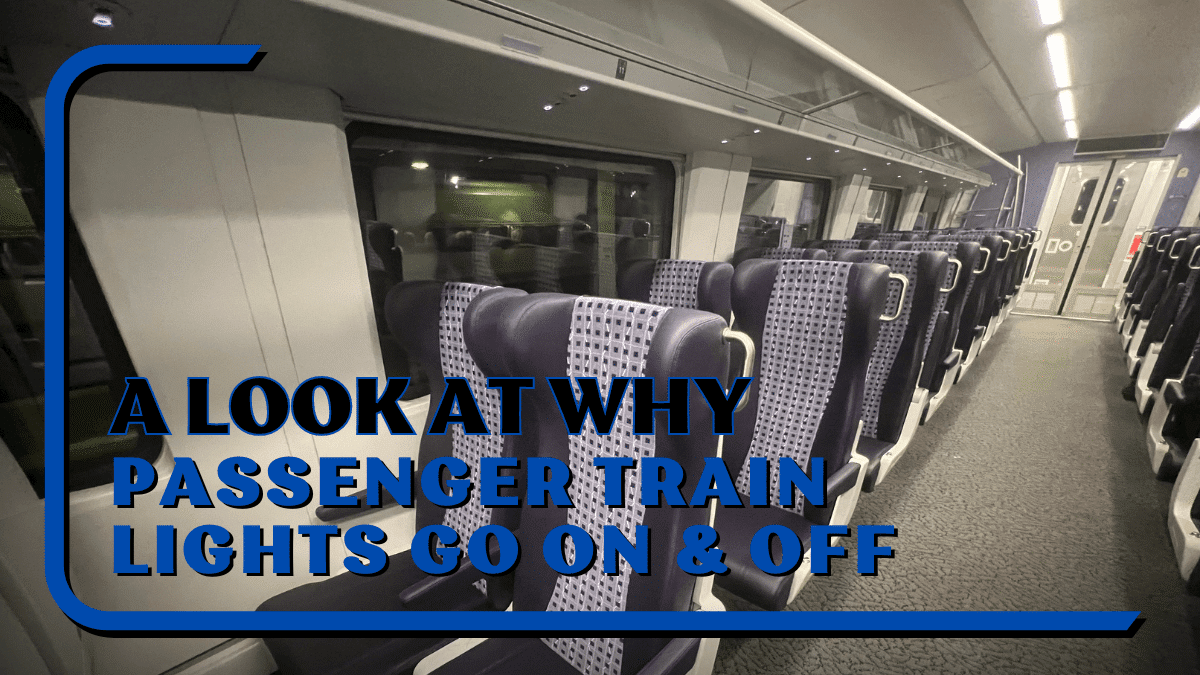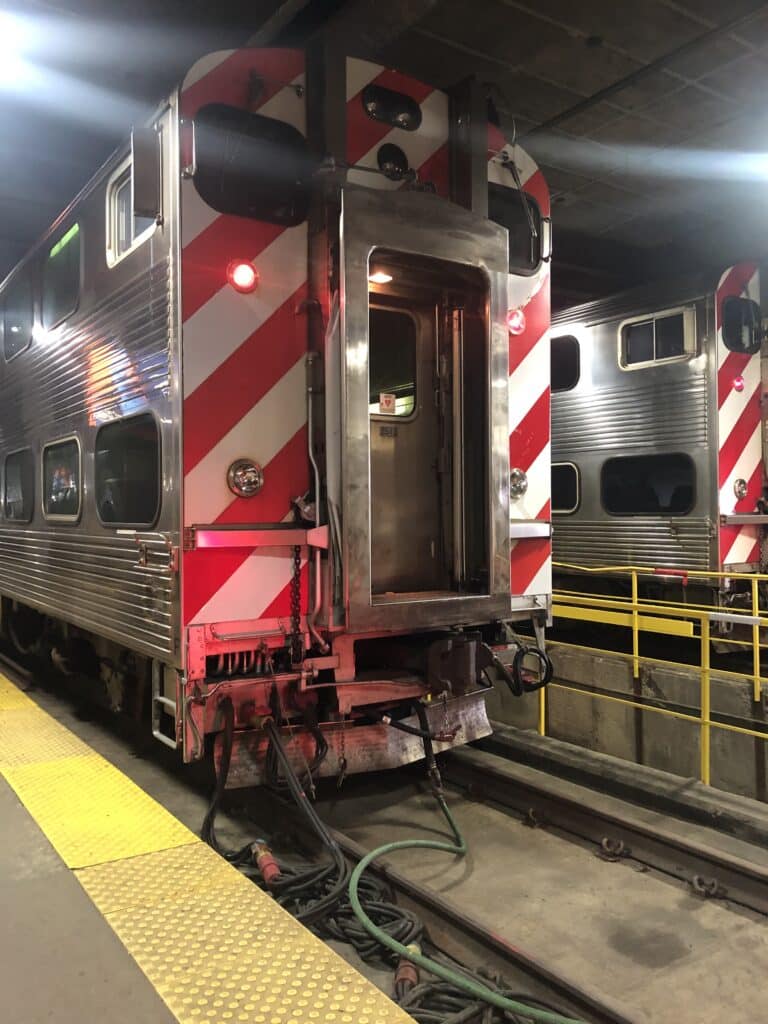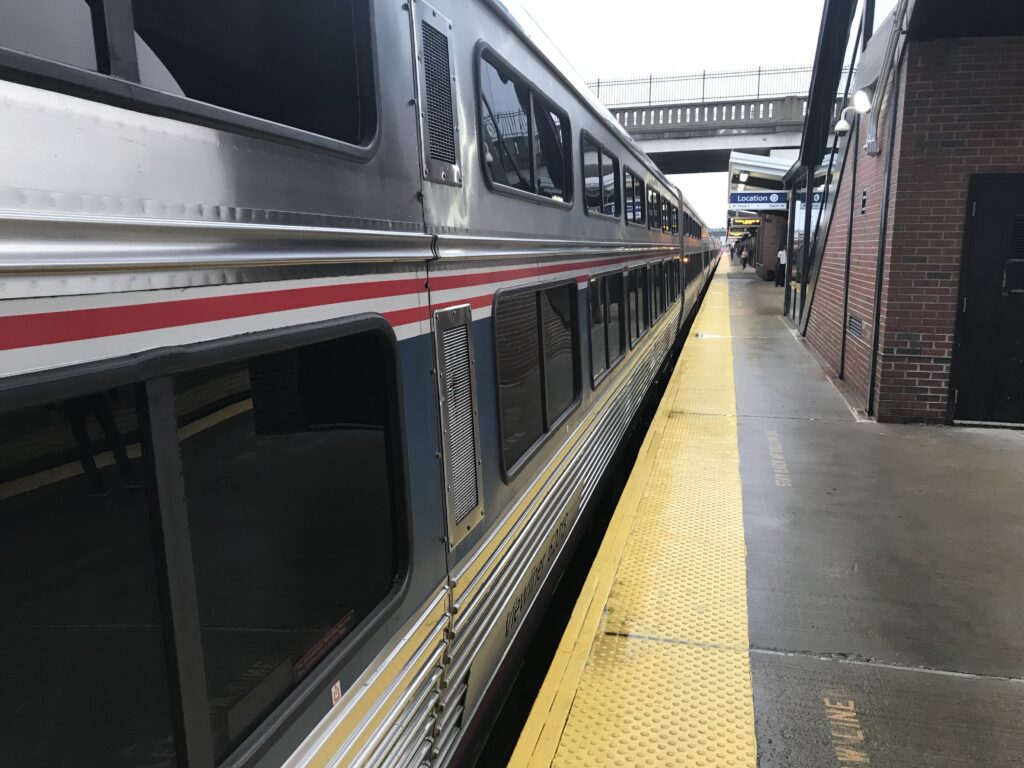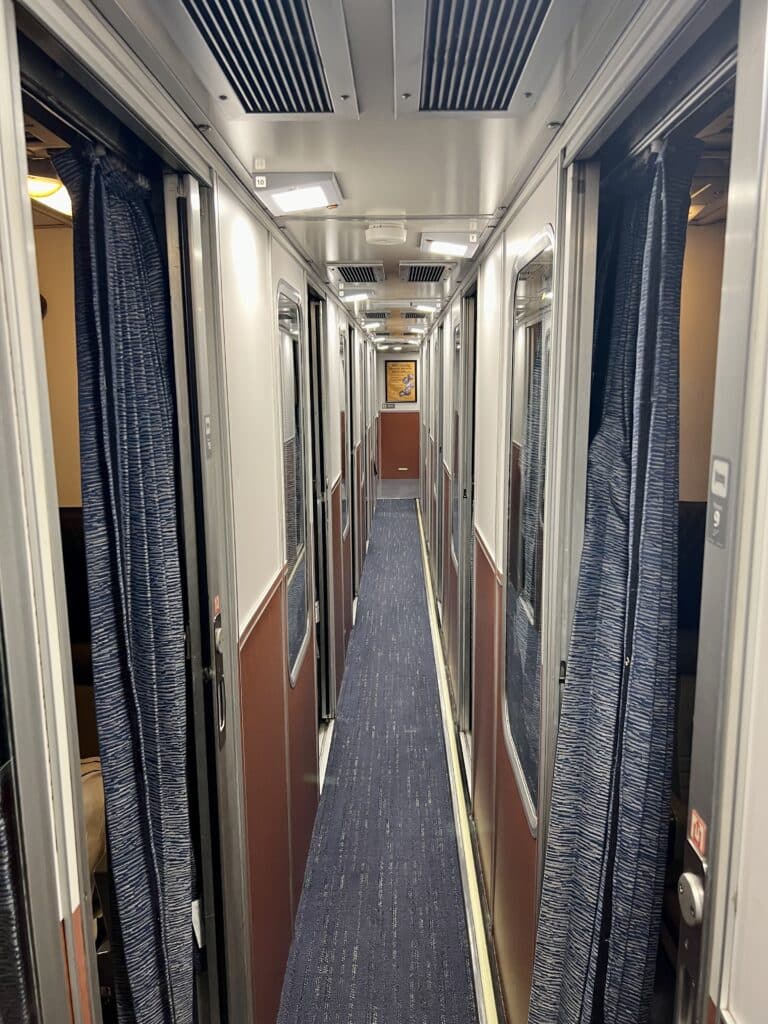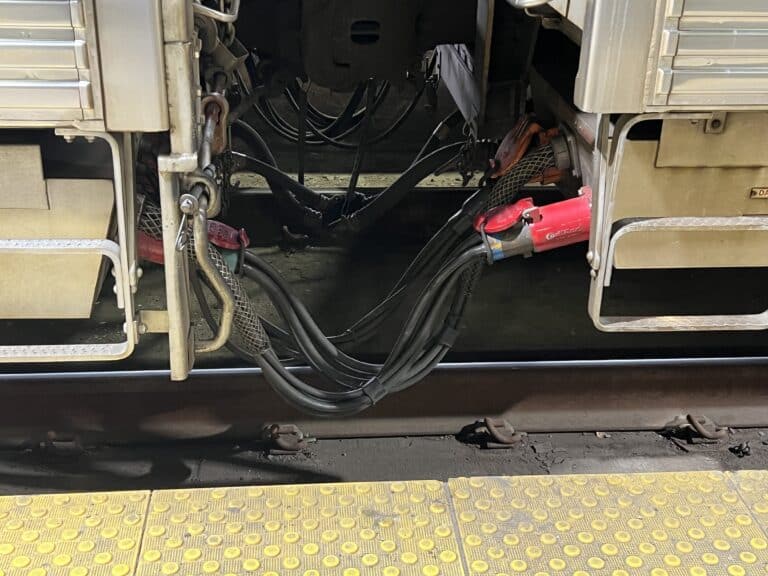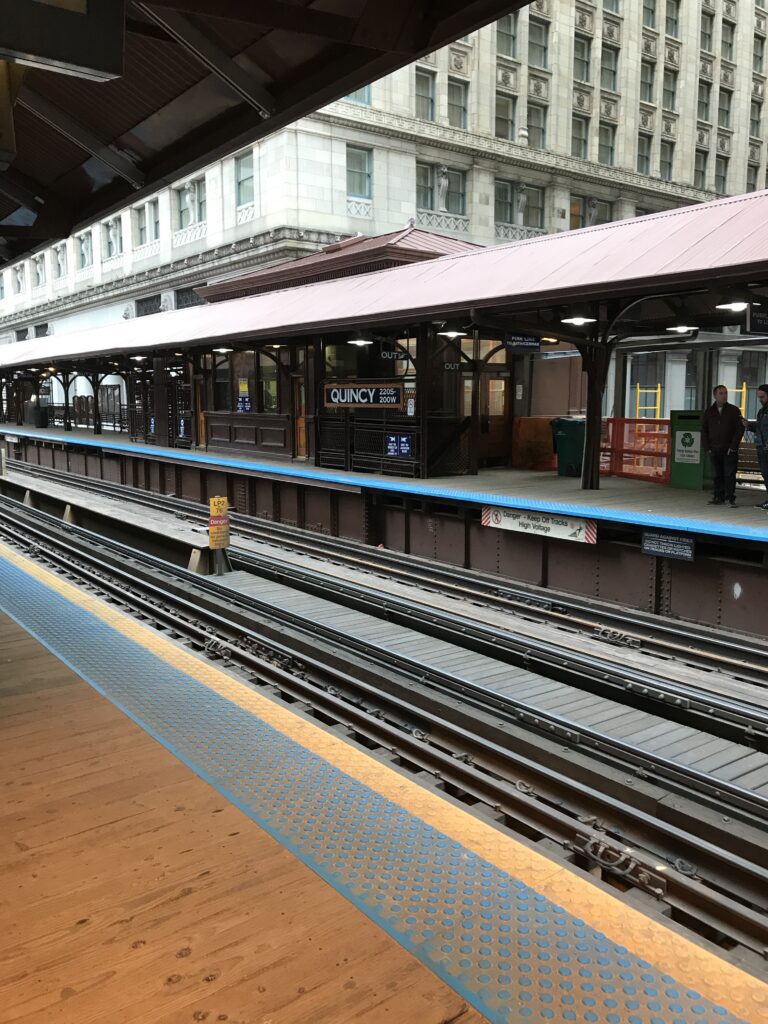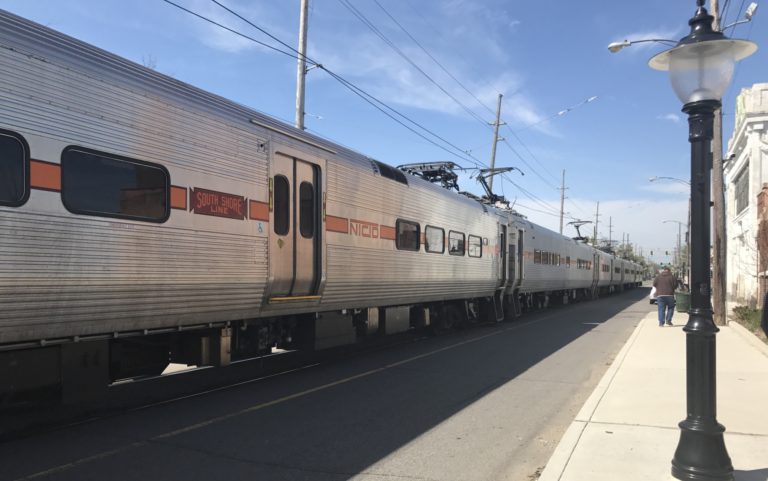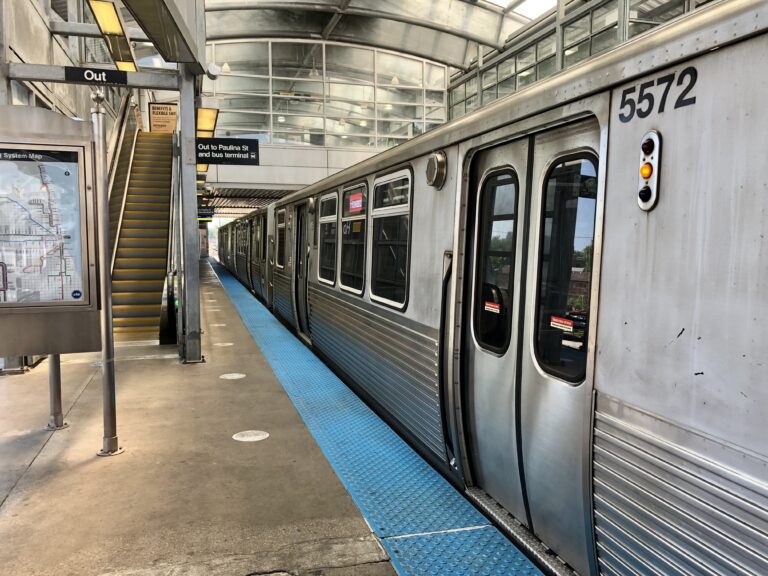If you have traveled any time by train, you may have noticed that the lights occasionally go on and off. There are many reasons why passenger train lights go on and off. For example, when you arrive at a station, the train may go dark momentarily as you try to get off.
As you will find out, there is nothing wrong with the trains, and there is a logical reason for this.
Efficiency: one reason why passenger train lights go off
If you are at a station, efficiency is the main reason the lights go on and off.
Passenger locomotives produce power using head-end power (HEP) for lights, heating and AC systems, outlets, and more, and it is called hotel power.
HEP is excellent for traveling down the rails but is less efficient during long station stops when other power is available.
Most stations where trains sit for a while have “house power,” where staff can “plug” the train in and use the station or house power instead of HEP.
Doing this saves railroads money by saving fuel and reducing wear on equipment because the trains do not need to run the HEP generator.
When trains switch from “house” to HEP or vice versa, the lights will go off as they unplug from one source to another.
Each car has a battery backup system to run emergency lights and the PA system. This system often engages for a few moments during the power swap.
If you are on the train while this happens, a few things will not work, like toilets and food cars.
Equipment changes can cause passenger train lights to go off
A few times, the train may not power along the way to your destination.
Equipment swap
If you have ever traveled through Washington DC on a long-distance train, you have experienced a period when the power is off.
Amtrak uses diesel locomotives south of Washington, DC, and electric locomotives north of DC. So, in DC, Amtrak does the engine swap.
During this time, there will not be power on the train for the safety of the employees.
Sometimes, the Cardinal hauls extra equipment between Chicago and the Beechgrove repair center. While Amtrak adds or subtracts equipment, the lights go off until they finish.
Combing trains
A few trains separate or come together en route, and like during equipment swaps, the train will not have power.
Passenger train lights go off during some safety checks
Sometimes, trains must undergo safety checks; during these tests, the engineers may need to shut off the power to the passenger cars temporarily.
Squeeze out a little more power!
Locomotive engineers sometimes turn off the HEP if the train needs more power. The HEP can reduce the power to the traction motors that power the train.
If engineers need to do this, it is for a very short time.
Good night!
If it is later at night and the light goes off, and they don’t come back on, it could be because it’s nighttime!
Amtrak will turn the lights off in coach cars at night so you can sleep.
There are nightlights at night. Do not try to tamper with them; yes, I have seen this. You may want to find a comfortable eyemask if you need complete darkness to sleep as you travel.
I got unplugged!
Passenger cars transfer power from one car to the next with cables; sometimes, these cables come undone during travel, which could cause the loss of electricity. Once the train stops, the crew can reconnect the line, and all will be well. If this happens, don’t worry; all the safety equipment still works.
Passenger train lights on electric trains.
Today, your adventure could have a diesel or electric locomotive; electric train locomotives predate their diesel counterparts.
Electric trains get their power in one of two ways: overhead wires or a third rail.
How electric trains give you power
Electric trains do not have the same HEP as diesel; instead, they have a converter that reduces the voltage to house power.
Block issues
A “dead block” or section occurs when the power source, the overhead line or third rail, is not connected to electricity.
Regardless of where an eclectic train gets its power, it may experience a dead block on the tracks.
Railroads break up the power lines, either the wires or rails, into blocks, allowing them to work on one section without shutting down the whole line.
Railroads may intentionally cause a dead block for maintenance; in this case, they will not send trains down those rails. Other reasons can be acts of god or accidents, in the case the train could run into a dead block if not warned immediately. But this would rarely happen.
Third-rail train power issues
An example of the third rail is Chicago’s CTA Subway/Elevated Lines. Each car contacts the third rail to get power for that car.
A train may lose power when going through a switch or crossing another track because the car loses contact with the power rail.
The power will return as soon as that car passes through that area.
Overhead Wires
Other electric trains use overhead wires; examples include the South Shore Line, Amtrak’s Northeast Corridor, and streetcars in San Francisco.
Power loss on these trains can happen if the train loses contact with the overhead power.
Wrap-up on passenger train lights
I hope this answers your question about why interior lights on passenger trains go on and off.
On one journey to Chicago aboard a Metra train, the hotel power went off because a cable became loose and disconnected.
Since we were not in danger, they waited until we arrived at Chicago Union Station to fix the problem since we were close.
It is fun to hear first-time train travelers gasp when it happens. Now you know that you can share this info with your travel companions.
Safe travels!
Kev
For more info
Would you like train travel info in your inbox?
Consider joining the Travel with Kev email list for Amtrak travel info, tips, and tricks.

